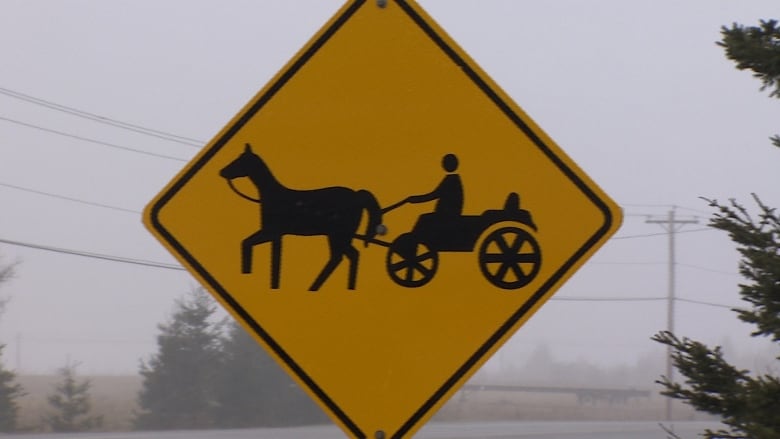'Don't be blowing your horn to startle the horse': P.E.I. considers more rules for buggies
Government says more Islanders using horses as transportation — and not just the Amish

It's illegal to drink and ride a horse on P.E.I.'s roads, your buggy must be marked as a slow-moving vehicle, and if you're holding up traffic, you need to giddy up or pull over.
But as more Islanders choose horse and buggy as a means of transportation, government officials are wondering if more rules are needed.
"I think we're getting a bit of a tick up again of using horse and wagon on P.E.I.'s roads, which a number of years ago was not that unusual," said Graham Miner, the province's director of highway safety.
'Agricultural province'
"I mean, we are an agricultural province."

Last week, there was a minor collision between a car and an Amish driver of a horse-drawn buggy.
But Miner said it's not just the Amish who are harnessing up.
'Maybe because of the Amish coming they thought, "Maybe I should, if it's not such a great distance, have a horse and wagon to go here and there.'"- Graham Miner
"I think some people are starting to make a conscious decision, whether it's going green, their environmental footprint," he said.
"Maybe because of the Amish coming they thought, 'Maybe I should, if it's not such a great distance, have a horse and wagon to go here and there.'"
But Miner said since a horse and buggy isn't a motor vehicle, drivers don't need a licence, registration or insurance.
It is, however, considered a slow-moving vehicle — like farm tractors — and have to be marked with an orange triangle and at least one reflector on the back of the vehicle, and a headlight, if it's being driven at night.

Miner said the Department of Transportation is looking at whether more markings are needed, similar to those on the sides of transport trucks and school buses.
"At night time if you're going through an intersection side-on then there's reflecting back on you that something is going through an intersection," he said.
Subject to traffic rules
People riding horses and driving buggies fall within the range of other road users, such as pedestrians and cyclists, Miner said.
"All the obligations of the person using the horse and wagon — right of way, turning, signaling, where they are to be on the road based on their speed and so on — have to follow the rules of the Highway Traffic Act."
One of those rules is no riding or driving a horse on a road while intoxicated. Although it is not a Criminal Code offence — because neither the horse nor wagon are considered a motor vehicle — the fine can be up to $1,000 under the Highway Traffic Act.
In fact, someone on P.E.I. was charged last year for driving a horse and wagon impaired, Miner said.
Share the road
Miner said while rules are in place for horses and buggies, others should be considerate and share the road, as well.
"If you are operating a vehicle and you're getting behind a horse and buggy you should be sitting back a little ways, be patient, be cautious when you're passing, don't speed up, don't be blowing your horn to startle the horse or anything like that."
-
MORE P.E.I. NEWS | Health PEI launches online donor registration form
-
MORE P.E.I. NEWS | Rezoning for new Holland College residence gets unanimous approval from Charlottetown council